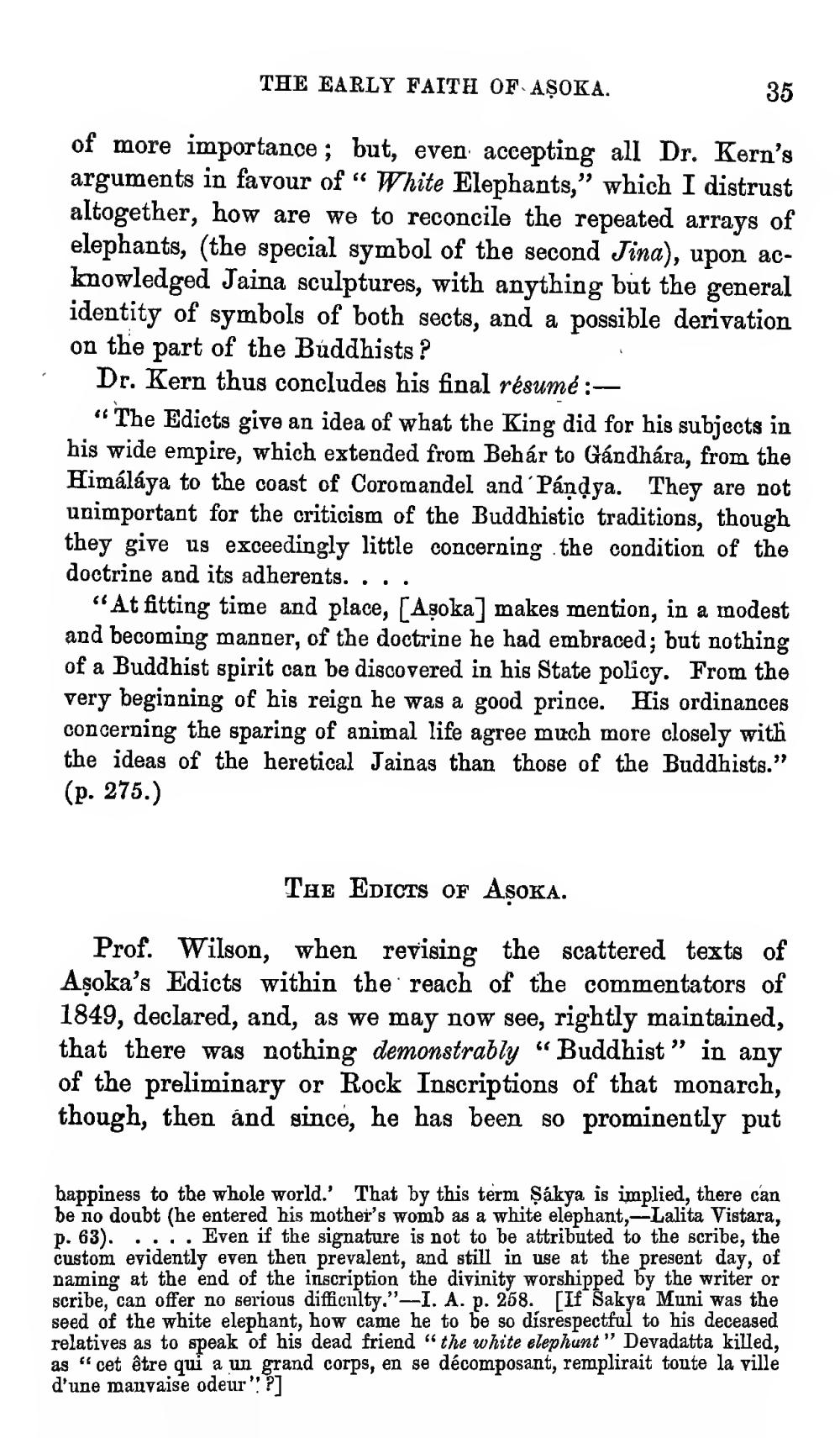________________
THE EARLY FAITH OF AŞOKA.
35
of more importance; but, even accepting all Dr. Kern's arguments in favour of " White Elephants," which I distrust altogether, how are we to reconcile the repeated arrays of elephants, (the special symbol of the second Jina), upon acknowledged Jaina sculptures, with anything but the general identity of symbols of both sects, and a possible derivation on the part of the Buddhists ?
Dr. Kern thus concludes his final résumé :--
- The Edicts give an idea of what the King did for his subjects in his wide empire, which extended from Behár to Gándhára, from the Himáláya to the coast of Coromandel and Pandya. They are not unimportant for the criticism of the Buddhistic traditions, though they give us exceedingly little concerning the condition of the doctrine and its adherents. ...
"At fitting time and place, [Asoka] makes mention, in a modest and becoming manner, of the doctrine he had embraced; but nothing of a Buddhist spirit can be discovered in his State policy. From the very beginning of his reign he was a good prince. His ordinances concerning the sparing of animal life agree much more closely with the ideas of the heretical Jainas than those of the Buddhists." (p. 275.)
TAE EDICTS OF AŞOKA.
Prof. Wilson, when revising the scattered texts of Asoka's Edicts within the reach of the commentators of 1849, declared, and, as we may now see, rightly maintained, that there was nothing demonstrably “Buddhist” in any of the preliminary or Rock Inscriptions of that monarch, though, then and since, he has been so prominently put
bappiness to the whole world. That by this term Şákya is implied, there can be no doubt (he entered his mother's womb as a white elephant,--Lalita Vistara, p. 63). ..:. Even if the signature is not to be attributed to the scribe, the custom evidently even then prevalent, and still in use at the present day, of naming at the end of the inscription the divinity worshipped by the writer or scribe, can offer no serious difficulty." --I. A. p. 258. If Sakya Muni was the seed of the white elephant, how came he to be so disrespectful to his deceased relatives as to speak of his dead friend "the white elephunt" Devadatta killed, as "cet être qui a un grand corps, en se décomposant, remplirait toute la ville d'une manvaise odeur ':?]




